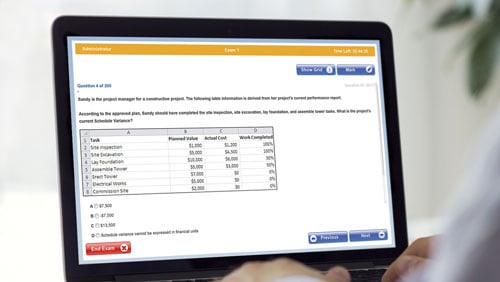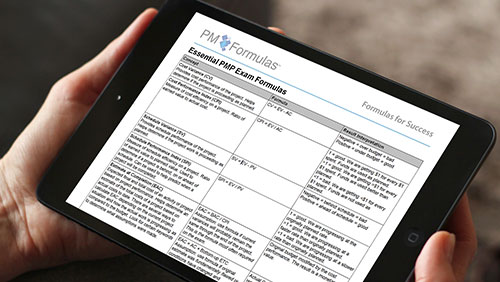Generational Sensitivity and Diversity
 Today’s workforce is made up of more generations than ever before. You might find yourself working with five generations on your project team. So on today’s modern it’s imperative for you to apply generational sensitivity and diversity-awareness to your project teams.
Today’s workforce is made up of more generations than ever before. You might find yourself working with five generations on your project team. So on today’s modern it’s imperative for you to apply generational sensitivity and diversity-awareness to your project teams.
In this article I’ll show you what that means and how it affects your projects. We’ll also look at how cultural sensitivity has an impact on Human Resource Management, Communications Management and Stakeholder Management on your projects: Three large areas of content in A Guide to the Project Management Body of Knowledge (PMBOK® Guide).
This article is based on an interview that I recorded with Margaret Meloni, PMP. We did the interview because “Generational Sensitivity and Diversity” was recently added to the Project Management Professional (PMP)® Exam Content Outline and she is a respected expert on soft skills. Also, those currently studying for their exam have to expect questions around this topic not only in their PMP Exam Prep but even on the actual exam.
WHAT IS GENERATIONAL SENSITIVITY AND DIVERSITY?
Let’s break down our topic and define it.
‘Generational’ means coming from different generations; born during different eras. This could be marked by the time periods in which team members were born or by the significant events that have shaped their thoughts and opinions.
Sensitivity is awareness combined with respect.
Diversity is ‘lack of sameness’ -- different people coming together in the same place.
GENERATIONAL DIVERSITY IN THE WORKPLACE
So why is any of this relevant to how you manage your projects?
Due to the fact that people are getting older and staying active longer, they are also staying in the workforce longer. It’s more and more common for different generations to be working side by side.
In addition, our ideas about aging have changed. There are financial reasons to stay working longer, and many people choose to continue working for the social networking it offers them, as well as being personally rewarding. The retirement age is moving steadily upwards and some people are even coming out of retirement to move back into project work – often at their company’s request!
CULTURAL SENSITIVITY: THE WIDER DIVERSITY PICTURE
The concept of generational sensitivity and diversity is part of the wider picture of cultural sensitivity. If you look at our cultural history, you’ll see there was a time when diversity was about women. Then there was a time when it was about race, or religion, and those cultural paradigms still exist today. But the noticeable difference today is that the workforce is now also made up of people from different age groups.
Cultural sensitivity in the wider sense is essential in the workplace because it’s always important to treat each other with respect and not to treat somebody differently or to make them feel uncomfortable because they are of a different age, race, or gender preference.
GENERATIONAL DYNAMICS AND PROJECT RESOURCE MANAGEMENT
Let’s get practical. How do generational dynamics come into play when we are putting together project teams? Project Resource Management is a crucial skill for a project manager and a significant part of the PMBOK® Guide, so it’s important to be informed and to make the right choices.
Think about fairness in hiring and the assumptions you might make when you’re on boarding new project team members. You want to hire the best resource for the job. Sometimes, as a project manager, you don’t get to do the hiring but you do have a say in who’s on your team.
Build a team that represents different perspectives. You don’t want to build a team strictly based on the fact that they are in the same age group. Practice fairness and equality when hiring new personnel by choosing the person who is right for the position, no matter what their age.
Put aside thoughts of, “I don’t want to give that person an important role on the project because they are older and they’re going to retire soon.” Maybe somebody you know who’s 35 is going to win the lottery and retire! That’s not the right way to make smart decisions about the people on your project team.
PROJECT COMMUNICATIONS MANAGEMENT AND THE MULTI-GENERATIONAL WORKPLACE
Project Communications Management is another area of the PMBOK® Guide where it benefits you to consider a multi-generational workplace.
Be flexible in your communications and try not to judge. Others on the team, both older and younger than you, may have different communications preferences, and as the project manager you should do what you can to accommodate these preferences. For example, some people on the team might prefer a text message to get their attention prior to a long conversation or phone call. Others might prefer instant messaging. Others might prefer you to book a meeting. And yes, generational experiences and what people are used to can often guide communications preferences.
Consider the methods of receiving and sending formal and informal communications on your projects. You might even be prepared to adjust your style for individual team members. For example, it may be okay for a person who communicates well and efficiently to send you formal communications by text. If that doesn’t work on your project, you should outline and present your approach to formal communication and make it clear to all what is acceptable – and what is not.
All of these should be built into your Project Management Communications Plan.
GENERATIONAL SENSITIVITY AND STAKEHOLDER MANAGEMENT
Two common tools and techniques for Stakeholder Management are expert judgment and meetings. They are both areas where you can use generational sensitivity to plan your stakeholder engagement activities.
First, use your expert judgment to sit down and develop approaches based on knowing who your project stakeholders are. Someone’s age is just a small part of who they are and their age may or may not actually dictate how they behave. Bring your expert judgment to understand the situation, and to help make effective decisions with the group based on your expert judgment.
Second, think about how you are going to get the best out of the meetings you run, and consider meetings as a method of keeping people engaged. How can you do this with some creativity? Does it have to be that everybody must show up in a conference room with chairs at a certain time? Can it be virtual? Can it be something where you all get together and it’s team building – you can have some fun and talk business? And if so, think carefully about what “fun” means to different people on your team.
HOW TO IMPROVE YOUR CULTURAL DIVERSITY AWARENESS
Awareness can be built and improved upon over time. Pay attention to your thoughts. When you look at someone, listen to your internal monologue and be aware of what you’re saying to yourself. Listen for that internal voice that says “Oh, look at that gray hair, I can’t have them work on this new technology project,” or “When I was that age, tattoos weren’t a thing.” If you are younger do you look at somebody older and think, “Wow, they’re just set in their ways, they don’t get it.”
Your thoughts influence how you treat someone, so start with those. Try to pick out your own limiting beliefs and challenge your own preconceptions. Aim to look at each person on your project team as a unique individual with something valuable to contribute to the project.
Use The PM PrepCast as a springboard for challenging your perceptions about project management and project teams. By covering everything you need to know about Human Resource Management, Communications Management and Stakeholder Engagement on your projects, plus detailed coverage of ethics and team leadership, you will become a culturally sensitive and generationally aware project manager. And it will help you pass the PMP Exam at the same time!




